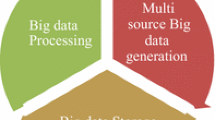Abstract
Differential privacy (DP) has now become a standard in case of sensitive statistical data analysis. The two main approaches in DP are local and central. Both the approaches have a clear gap in terms of data storing,amount of data to be analyzed, analysis, speed etc. Local wins on the speed. We have tested the state-of-the-art standard RAPPOR which is a local approach and supported this gap. Our work completely focuses on that part too. Here, we propose a model which initially collects RAPPOR reports from multiple clients which are then pushed to a tf–idf estimation model. The tf–idf estimation model then estimates the reports on the basis of the occurrence of “on bit” in a particular position and its contribution to that position. Thus, it generates a centralized differential privacy analysis from multiple clients. Our model successfully and efficiently analyzed the major truth value every time.



Similar content being viewed by others
References
Solove DJ. Understanding privacy, vol. 173. Cambridge, MA: Harvard University Press; 2008.
Sweeney L. k-anonymity: a model for protecting privacy. Int J Uncertain Fuzzy Knowl Based Syst. 2002;10(05):557–70.
Dwork C, Roth A. The algorithmic foundations of differential privacy. Found Trends Theor Comput Sci. 2014;9(3–4):211–407.
Erlingsson Ú, Pihur V, Korolova A. Rappor: randomized aggregatable privacy-preserving ordinal response. In: Proceedings of the 2014 ACM SIGSAC conference on computer and communications security, 2014 November. p. 1054–1067.
Bittau A, Erlingsson Ú, Maniatis P, Mironov I, Raghunathan A, Lie D, ... Seefeld B. Prochlo: Strong privacy for analytics in the crowd. In: Proceedings of the 26th symposium on operating systems principles; 2017 October, pp. 441–459.
Chowdhury AR, Wang C, He X, Machanavajjhala A, Jha SO. Crypto-assisted differential privacy on untrusted servers. 2019. arXiv:1902.07756.
Kasiviswanathan SP, Lee HK, Nissim K, Raskhodnikova S, Smith A. What can we learn privately? SIAM J. Comput. 2011;40(3):793–826.
Erlingsson Ú, Feldman V, Mironov I, Raghunathan A, Talwar K, Thakurta A. Amplification by shuffling: from local to central differential privacy via anonymity. In: Proceedings of the 30th annual ACM-SIAM symposium on discrete algorithms, 2019. p. 2468–2479. Society for Industrial and Applied Mathematics.
Tang J, Korolova A, Bai X, Wang X, Wang X. Privacy loss in Apple’s implementation of differential privacy on MacOS 10.12. 2017. arXiv:1709.02753.
Warner Stanley L. Randomized response: a survey technique for eliminating evasive answer bias. Milton Park: Taylor & Francis; 1965. p. 63–9.
Aizawa A. An information-theoretic perspective of tf–idf measures. Inf Process Manag. 2003;39(2003):45–65.
Wu CH, Robert WPL, Wong FK, Kwok LK. Interpreting TF-IDF weights as making relevance decisions. ACM Trans Inf Syst 2008; 26(3), Article 13.
https://github.com/Suvixx/ARA-Aggregated-RAPPOR-and-Analysis-for-Centralized-Differential-Privacy.
Author information
Authors and Affiliations
Corresponding author
Ethics declarations
Conflict of interest
The authors declare that they have no conflict of interest.
Additional information
Publisher's Note
Springer Nature remains neutral with regard to jurisdictional claims in published maps and institutional affiliations.
This article is part of the topical collection “Advances in Internet Research and Engineering” guest edited by Mohit Sethi, Debabrata Das, P. V. Ananda Mohan and Balaji Rajendran.
Rights and permissions
About this article
Cite this article
Paul, S., Mishra, S. ARA: Aggregated RAPPOR and Analysis for Centralized Differential Privacy. SN COMPUT. SCI. 1, 22 (2020). https://doi.org/10.1007/s42979-019-0023-y
Received:
Accepted:
Published:
DOI: https://doi.org/10.1007/s42979-019-0023-y




